Besieged Philly Inquirer Editor to Step Down
. . . Food Stores ‘Devastated’ in Black Neighborhoods
One Editor Out, 2nd Moved After N.Y. Times Dustup
Black Journalists Get Unprecedented Props
Black Reporter Barred From Covering Floyd Protests
L.A. Times Reaches Out to Staffers of Color
What RFK Might Say About Today’s Unrest
Statue of Ida B. Wells Tormentor Toppled
White Writer Raises Funds for Black Mental Health
Mark Anthony Rolo, ‘Going Native’ Columnist, Dies
NAHJ Board to Hold Elections After All
Why Prisons Deserve More Coverage
Home page photo by Clem Murray/Philadelphia Inquirer

Besieged Philly Inquirer Editor to Step Down
“Stan Wischnowski, the top editor of The Philadelphia Inquirer, has announced his resignation, days after discontent among the newspaper’s staff erupted over a headline on a column about the impact of the civil unrest following the police killing of George Floyd in Minneapolis,” Craig R. McCoy reported Saturday for the Inquirer.
“Wischnowski, 58, led the paper over two turbulent periods in recent years, driving it; its sister paper, the Daily News; and its website, Inquirer.com, to reshape themselves as the digital age transformed the news business. He was key in the creation of Spotlight PA, a new multireporter team to provide news outlets across Pennsylvania with investigative coverage of state government. He also was in charge in 2011 when The Inquirer investigated violence within Philadelphia schools, a series awarded the Pulitzer Prize for Public Service.
“In a statement Saturday afternoon, publisher Lisa Hughes said that Wischnowski ‘has decided to step down as senior vice president and executive editor.’ She thanked him for his 20 years working at the paper and serving as executive editor.
“He will formally leave the paper on June 12. No successor was named, but Hughes wrote to the staff that ‘We will use this moment to evaluate the organizational structure and processes of the newsroom, assess what we need, and look both internally and externally for a seasoned leader who embodies our values, embraces our shared strategy, and understands the diversity of the communities we serve. . . .”
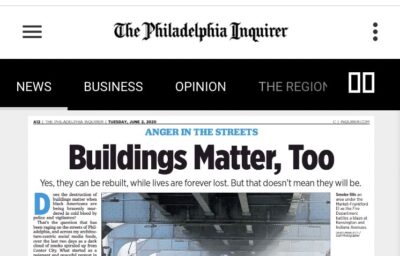
McCoy also wrote, “It was the placement of an insensitive headline over Inga Saffron’s column in the Tuesday newspaper that may have set the stage for Wischnowski’s departure. He joined the two other top editors in signing an apology to readers and staff, characterizing the headline, ‘Buildings Matter, Too,’ as ‘deeply offensive’ and apologizing for it. The column had explored the destruction of buildings amid the looting that accompanied some of the nationwide protests over police violence.
“Even before the headline was published, Wischnowski and other editors had scheduled a staffwide Zoom meeting to discuss race at The Inquirer and the pressures in particular faced by journalists of color.
“Wischnowski, low-key and measured, as is his personality, told staffers on Wednesday that the paper had made strides in diversifying its 213-member newsroom, boosting minority representation to 27% of the editorial workforce, about a doubling in four years. He promised more such hires.
“The session turned intense and emotional. Some journalists could be seen in tears in their Zoom frames. Critics, black and white, denounced the pace of change at the paper, sharply criticizing both coverage and the racial and gender mix of the staff. Several journalists pointed out that the newspaper could muster only one male African American reporter to cover the protests and police response convulsing a city that is majority minority.
“Hours after the wrenching Zoom session, about 50 journalists of color signed an open letter calling for faster changes at the paper. The following day, most of the minority staff took the day off from work in protest. . . .”
On Sunday, publisher Lisa Hughes wrote the staff “While we strive to produce reporting that shines a spotlight on the systemic racism throughout our community, we must also be willing to critically evaluate our own internal failures. . . It is clear that we need to make changes, and I have asked Lauren Kauffman and Michael Days to put together a plan with recommendations within the next 50 days. Kaufmann is vice president, people and culture at Philadelphia Media and Days is vice president for diversity and inclusion at the Inquirer.
. . . Food Stores ‘Devastated’ in Black Neighborhoods
Coincidentally, Michael Days, the Philadelphia Inquirer’s vice president for diversity and inclusion, discussed Tuesday the paper’s response to unrest in the Philadelphia streets at the Journal-isms Roundtable (video).
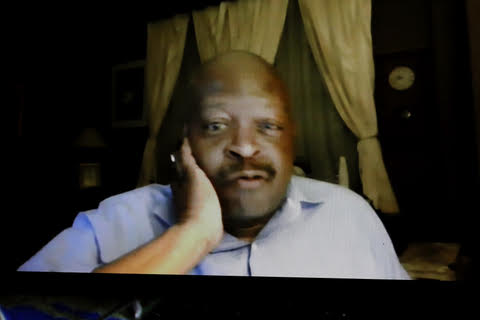 “I think we’re working harder to be more balanced, as opposed to just running around covering stuff,” Days (pictured ; photo by Sharon Farmer/sfphotoworks) said. “We say, ‘so what’s the right mix of stories’? In reality, we’re covering two pandemics at the same time; one is 400 years old, the other just arrived from Europe or someplace.
“I think we’re working harder to be more balanced, as opposed to just running around covering stuff,” Days (pictured ; photo by Sharon Farmer/sfphotoworks) said. “We say, ‘so what’s the right mix of stories’? In reality, we’re covering two pandemics at the same time; one is 400 years old, the other just arrived from Europe or someplace.
“I worry about the mental state of the people who are our first responders. The reporters, the photographers, our videographers. . . . Over the weekend, we had three photographers have their equipment stolen; I don’t remember that ever happening, in 40-some years; and one reporter knocked down by the police officer, I mean really knocked down, not just tapped; and one knocked down by a protester.
“So you know you’re sending folks back out there, and so you’re trying to be mindful of what’s their temperature, what’s their mood, are they getting nervous?
“I think we’re being measured, and understanding that we have a very diverse readership. And you know . . . the truth of it is it wasn’t that long ago that advertisers paid the bills, and now they don’t. So the eyeballs come from the readers, from the consumers and whether it’s digital or print. So you want to make sure that when they’re looking at our content they’re feeling like, these folks are trying to do a good job.
“We’ve had a lot of looting. I’m personally concerned and upset about looting in places that were food deserts not too long ago. . . . and people came in and created . . . supermarkets, you know. And the chains moved in . . . in African American neighborhoods. They’ve all been devastated. In two days. And we all know it takes more than a generation to bring that back. And so I understand the rage. I tell people, let’s not be pointing fingers, finger wagging, because you’ve got a place to eat and you’re not worrying — I think we’re thinking a lot more about what we’re doing and how we’re doing it. That’s a good thing.”
- NewsGuild of Greater Philadelphia: You Were Heard! (June 6)
- Philadelphia Inquirer: An apology to our readers and Inquirer employees (June 3)

One Editor Out, 2nd Moved After N.Y. Times Dustup
James Bennet, (pictured below), editorial page editor of the New York Times since May 2016, is resigning effective immediately, and his deputy, James Dao, is “stepping off the masthead and being reassigned to the newsroom,” the Times announced on Sunday.
“Katie Kingsbury, who joined The Times in 2017, has been named as acting editorial page editor through the November election.
Dao, named to the deputy’s job in 2016, was one of the highest ranking Asian Americans at a newspaper editorial page. He was listed on the masthead.
The shakeup follows an uproar following publication of a controversial op-ed by Sen. Tom Cotton, D-Ark., a piece that ignited furious debate inside and outside of the newspaper.
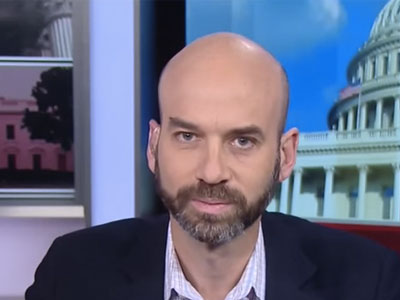 Cotton’s piece argued that the Insurrection Act could be invoked to deploy the military across the country to assist local law enforcement with unrest sparked by the death of George Floyd.
Cotton’s piece argued that the Insurrection Act could be invoked to deploy the military across the country to assist local law enforcement with unrest sparked by the death of George Floyd.
As David Bauder reported Thursday for the Associated Press, “Cotton’s op-ed, titled ‘Send in the Troops’ and first posted online late Wednesday, caused a revolt among Times journalists, with some saying it endangered black employees. Some staff members called in sick Thursday in protest.
“Among the Times journalists who had protested publication of Cotton’s piece was Nikole Hannah-Jones, who last month won a Pulitzer Prize for her magazine piece, ‘The 1619 Project,’ about black Americans since the first arrival of slaves.
“ ‘As a black woman, as a journalist, I am deeply ashamed that we ran this,’ Hannah-Jones tweeted.
The Times reported last week that “In a video meeting of the opinion department on Thursday afternoon, Mr. Bennet and James Dao, the deputy editorial page editor, acknowledged that there had been a breakdown in the process of preparing the essay for publication, according to four people who attended it. The editors said that the article had been fact-checked, but added that they would fact-check it again.”
Dao joined The Times from the Daily News in 1992, He worked on the metropolitan desk, served as a national correspondent and also worked as a Washington correspondent covering Congress, the State Department, the 2000 presidential campaign and the military. Dao also served as the paper’s military and veterans affairs writer in 2010 and 2011, according to the announcement when he became op-ed editor.
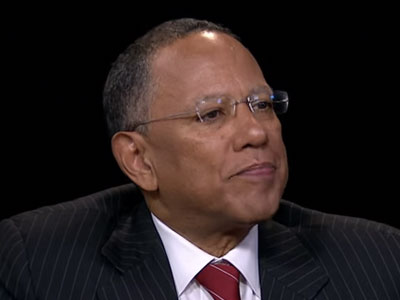 Oliver Darcy reported for CNN Business on Friday that Times leaders held at-times tense town hall with staff to address the process that led to the publication of the op-ed.
Oliver Darcy reported for CNN Business on Friday that Times leaders held at-times tense town hall with staff to address the process that led to the publication of the op-ed.
Dean Baquet (pictured above), the Times’ first African American editor, “told staff that he occupies a position of significant influence in journalism, but that when he walks on the street in jeans and sneakers, he is viewed differently in society’s eyes.” “Bennet — who the staffers on the call described as appearing ‘troubled’ and ‘shaken’ — had published an article defending the decision to run Cotton’s op-ed less than 24 hours before his comments.
Darcy wrote, “Bennet — who the staffers on the call described as appearing ‘troubled’ and ‘shaken’ — had published an article defending the decision to run Cotton’s op-ed less than 24 hours before his comments.
“Bennet said that conversations with his black colleagues affected his thinking, according to one of the people on the call. . . .”
Bennet was seen as a potential successor to Baquet.
- Michael Goodwin, New York Post: Leftists are in firm control at The New York Times
This is a horrific graphic to have put up on air.
My god. pic.twitter.com/HoDof1AN9l
— Yashar Ali ? (@yashar) June 5, 2020
While many outlets reach for black journalists to provide context for recent events, insensitivity continues. On Saturday, Fox News Channel apologized.
Black Journalists Get Unprecedented Props
The existential issue of being a black journalist during a time of black rage is receiving unprecedented attention in tne news media, as news-business columnists report on black journalists’ views and others invite them on television, radio and the internet to give perspective.
Organizations such as the National Association of Black Journalists produced Zoomcasts to discuss such topics as “How They See Us,” held Saturday..
As one example, Jon Allsop wrote Friday in Columbia Journalism Review, “Glamour magazine heard from eight women journalists of color — including CNN’s Abby Phillip; Errin Haines, of The 19th; and Marissa Evans, of the Minneapolis Star Tribune.
“The journalists spoke about ‘reporting while Black.‘ They described the physical threats and emotional trauma involved in covering moments like this, the need for self-care, and the long-term media-industry biases that hinder their work, including racist notions of ‘objectivity’ and colleagues ignoring Black reporters’ concerns and expertise.
‘“ ‘There’s only so much harm to Black people that I can see in the field, through a lens, or on a screen before I begin to feel that I’m unraveling,’ Antonia Hylton, of NBC News, said. ‘I wake up anxious — not just about what might happen in the news, but also about the private worries that I might have to find a way to compartmentalize or suppress in order to do my job.’
“Since Floyd’s death, many other journalists of color have published similar testimonies. . . .”
CNN’s Brian Stelter and Oliver Darcy led off their “Reliable Sources” column Friday:
” ‘Black journalists are carrying unique burdens right now, covering protests in a pandemic about a story that hits close to home,’ April Ryan says.
“Amid so many attacks on the press in and around protests, National Association of Black Journalists president Dorothy Tucker says, ‘Imagine the terror of wearing both a press badge and black skin in this country at the same time.’
” ‘ It’s a unique balancing act,’ LA Times columnist LZ Granderson says, ‘juggling your humanity with your profession against the backdrop of both being under relentless attack in today’s toxic political environment.’
“Everyone should hear from these journalists — who are doing the critical, often excruciating and repetitive work of covering this story and living it at the same time — so here are some lists of recommended stories, columns, podcasts, and videos. . . .”
Both columns were laden with links to black journalists’ work.
- Kareem Abdul-Jabbar, Los Angeles Times: Don’t understand the protests? What you’re seeing is people pushed to the edge
- Alex Altman, Time: Why The Killing of George Floyd Sparked an American Uprising
- Joel Anderson, Slate: The Police Don’t Change
- Leah Asmelash, CNN: Best moments from CNN and Sesame Street’s town hall on racism for kids and parents
- Associated Press: AP journalist punched while walking with police commissioner
- Black Entertainment Television: BET News Presents: “Justice Now: A BET Town Hall” Airing Sunday, June 7 at 8PM ET/PT
- Mary C. Curtis, Roll Call: Chaos is all Trump has, as he hopes ‘law and order’ appeal will work in GOP’s favor. Will Americans demanding justice be heard? Or will fear once again prevail?
- Editorial, Buffalo News: Police cross the line, document the need for new thinking
- Editorial, Palm Beach (Fla.) Post: Floyd protests call for a stronger vaccine against systemic racism
- Megan Garber, The Atlantic: Don’t Fall for the ‘Chaos’ Theory of the Protests
- Robin Givhan, Washington Post: George Floyd was an ordinary man. His memorial was a reminder of that simple, powerful fact.
- LZ Granderson, Los Angeles Times: George Floyd and the special hell reserved for black journalists covering his killing (May 30)
- Constance Grady, vox.com: How 70 years of cop shows taught us to valorize the police
- Saba Hamedy and Francesca Giuliani-Hoffman, CNN: Some YouTubers say they plan to donate their ad revenue from videos to Black Lives Matter movement
- Bennie Ivory, Louisville Courier Journal: Once again we wrestle with the sin of racism. What the hell are we going to do?
- Cynthia Adina Kirkwood blog: I’m a Human Being, Not a Demographic
- Alison Bethel McKenzie, Report for America: For black journalists, a historic imperative and a unique burden
- Bryan Monroe, CNN: America needs white people to step up
- National Association of Hispanic Journalists: NAHJ Asks for Investigations into Abuse of Power and Racial Profiling of Latino Journalists
- National Press Club: Journalism groups call for police nationwide to halt use of violence and arrests against journalists covering protests
- Andre M. Perry and Jonathan Rothwell, Brookings Institution: When Black lives are valued, property becomes worth saving
- Don Rojas, Institute of the Black World 21st Century: America has its knee on the necks of Black & Brown People
- Gabe Rottman and Chris Young, Reporters Committee on Freedom of the Press: Reporters Committee letter to Minnesota officials demands end to police attacks against journalists
- Brian Stelter with Karen Attiah, Nikole Hannah-Jones and Jemele Hill, “Reliable Sources,” CNN: In newsrooms, ‘a raging debate over the role journalists should be playing‘ (video)
- Ben Strauss, Washington Post: ESPN has tried to focus more on sports, but that changed with George Floyd
- Marc Tracy and Rachel Abrams, New York Times: Police Target Journalists as Trump Blames ‘Lamestream Media’ for Protests
- Mark Trahant, Indian Country Today: A century of ‘Hands up, don’t shoot’
- Greg Wilson, Fox News: Fox News crew chased, attacked by angry mob while reporting on protests outside White House
- Randall Yip, AsAmNews: Photographer Hyoung Chang shot by Denver Police during rioting
Black Reporter Barred From Covering Floyd Protests
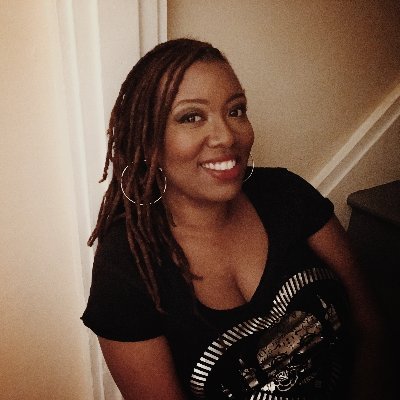 “According to the Newspaper Guild of Pittsburgh, a Black reporter at the Pittsburgh Post-Gazette has been recently barred from covering protests in honor of George Floyd, a Black man killed last week by a Minneapolis Police officer,” Ryan Deto reported Thursday for the Pittsburgh City Paper.
“According to the Newspaper Guild of Pittsburgh, a Black reporter at the Pittsburgh Post-Gazette has been recently barred from covering protests in honor of George Floyd, a Black man killed last week by a Minneapolis Police officer,” Ryan Deto reported Thursday for the Pittsburgh City Paper.
“Pittsburgh City Paper obtained a letter that was sent to members of the Newspaper Guild of Pittsburgh, which is the union that represents 140 journalists at the P-G. The letter indicates that reporter Alexis Johnson (pictured) was removed from any coverage related to the George Floyd protests that have been ongoing in Pittsburgh for the last several days.
“According to the letter, Johnson was pulled off of any protest coverage because of a tweet she sent on May 31 which poked fun at the mess typically made outside of Kenny Chesney concerts, and compared that to people who were upset about property damage that occurred following a protests in honor of George Floyd, a Black man killed last week by a Minneapolis Police officer.
“ ‘With Alexis Johnson’s permission, we are letting you know about an extremely troubling situation,’ read the letter. ‘Attached please find a tweet that Alexis posted, which went viral. It came to the attention of the powers that be, who on Monday confronted her in a conference call, told her she showed bias and as such, could no longer cover anything related to the protests of the police murder of George Floyd and the systemic racism that for too long has been a dirty segment of our national fabric.’ . . .”
Newspaper policies on journalists and protests more closely approximate those at the Dallas Morning News. Editor Mike Wilson messaged Journal-isms last week, “We ask our journalists not to participate in the stories we cover and not to openly take positions on matters of public controversy. That means not running for political office, contributing to campaigns, participating in marches and rallies, and so forth.”
- Ryan Deto, Pittsburgh City Paper: Recent moves by Pittsburgh Post-Gazette management have led to a shrinking and increasingly chaotic newsroom. Can the P-G survive? (Dec. 11)
L.A. Times Reaches Out to Staffers of Color
“LA Times exec editor Norman Pearlstine sends all-staff email announcing reforms, acknowledging LAT’s failures ‘addressing concerns of people of color in the newsroom’ and ‘focusing on a white subscriber base even as the city became majority non-white.’ ” LA Podcast reported Friday on Twitter, tweeting a letter to the stfaff from Pearlstine, the Times’ top editor.
NEWS: LA Times exec editor Norman Pearlstine sends all-staff email announcing reforms, acknowledging LAT’s failures “addressing concerns of people of color in the newsroom” and “focusing on a white subscriber base even as the city became majority non-white.” (con’t next post) pic.twitter.com/zNBut834VM
— LA Podcast (@thelapod) June 5, 2020
What RFK Might Say About Today’s Unrest
The video above, showing scenes of protest and violence from last week, was accompanied by the voice of Robert F. Kennedy delivering his “On the Mindless Menace of Violence” speech at the Cleveland City Club in April 1968, just after Martin Luther King Jr. was shot and killed. The video closed the 2020 RFK Book and Journalism Awards on Thursday.
The 2020 journalism honorees — selected from more than 325 entries in 13 categories — highlighted issues of concern to Kennedy that resonate today: human rights, social justice and the power of individual action, the organization said.
The year’s RFK Book Award went to “Dying of Whiteness: How the Politics of Racial Resentment Is Killing America’s Heartland,” by Jonathan Metzl. The book “offers an enlightening exploration of white identity politics and how the policies pitched to working-class white voters, promising to make white America ‘great again,’ are actually making their lives sicker, harder, and shorter as a result,” the group said.
The RFK Journalism Grand Prize went to Newsy for its documentary, ‘A Broken Trust.’ “The investigation examined how centuries of inequities, legal loopholes, and a profound ignorance of tribal issues by many in power in the federal government, have not only left Native American women vulnerable to sexual assault but also made it difficult, if not dangerous, to report their perpetrators. . . .
“The Seigenthaler Prize, which recognizes reporting under difficult circumstances requiring great courage and commitment, was given to Frontline PBS / Channel 4 / ITN Productions for its film, ‘For Sama.’ Told as a love letter from a young mother to her daughter over the course of five years in Aleppo, Syria, ‘For Sama’ granted viewers a remarkable look into the uprising and, importantly, showed it from a woman’s perspective for the first time. . . .”
Statue of Ida B. Wells Tormentor Toppled
Ida B. Wells, the anti-lynching crusader and newspaper editor, might be an icon today, but she was the subject of vicious attacks when she strove to defend her fellow African Americans in the late 1800s and early 1900s.
The George Floyd uprisings in Nashville brought that history to the surface briefly on May 30 when demonstrators toppled a statue of one of Wells’ chief tormentors, a racist Tennessee newspaper publisher and politician named Edward Carmack.
“The African race has never had a gleam of light across its dark history and . . . has within itself no promises or possibility of progress,” Carmack, editor of the Memphis Commercial, said. Paula J. Giddings further quotes Carmack in her 2008 biography, “Ida: A Sword Among Lions.” His assertion continues, “It is a race without history, without ideas, without hope.”
Carmack is “someone most people have never heard of, according to Senior Curator for the Tennessee State Museum, Jim Hoobler,“ Nashville’s WTVF-TV reported.
Carmack maintained that black men had an insatiable lust for white women and that Wells was a “black harlot.”
“Hoobler says Carmack wrote a scathing editorial endorsing some lynchings of black men trying to establish a grocery store in a Memphis neighborhood,” the story continued.
“A mob formed, hauled them out and lynched them. Carmack endorses that. Ida B. Wells decried that, they were friends of hers, he said.
“Carmack then turned his pen” against Wells for writing editorials in her own paper about the lynchings.
“He incited a mob to ‘get the black winch.’ She was out of town on a speaking tour and they burned the newspaper she worked in. She never came back to Memphis,’ Hoobler said. . . .”
- Editorial, Philadelphia Inquirer: Rizzo statue is gone, but not yet forgotten
- Roy S. Johnson, al.com: Gov. Ivey, lawmakers rescind law protecting Confederate memorials
- Dwight Lewis, The Tennessean, Nashville: Tennessee should honor Ida B. Wells with a statue in the state Capitol (May 20)
- Lynn Norment, Commercial Appeal, Memphis: Women’s History Month: The fiery, brilliant and forward-thinking Ida B. Wells (March 12)
- Jube Shiver Jr. blog: Will They Listen…This Time
- Zachary Small, NPR: Confederate Monuments Are Coming Down, Are Streets And Highways Next?
- Michael Paul Williams, Richmond (Va.) Times-Dispatch: “The Lost Cause is dead.” Let’s dismantle its legacy beyond the symbols.
White Writer Raises Funds for Black Mental Health
A white New York freelance writer has created a “Black Journalists Therapy Relief Fund” and quickly raised $32,311 before disabling new donations.
 “I’ve already distributed funds to 20 people and will continue doing so until everyone who’s requested assistance has received their desired amount,” Sonia Weiser (pictured) wrote Tuesday on the GoFundMe page created for the effort two days earlier. “I’m also actively working on finding an organization that will incorporate this fund into their mission.”
“I’ve already distributed funds to 20 people and will continue doing so until everyone who’s requested assistance has received their desired amount,” Sonia Weiser (pictured) wrote Tuesday on the GoFundMe page created for the effort two days earlier. “I’m also actively working on finding an organization that will incorporate this fund into their mission.”
Weiser elaborated in a message to Journal-isms on Saturday, “I’m the only person behind the drive. It’s not a nonprofit although I’m talking with different organizations now about the future for the campaign and how they can incorporate it into their work.”
She explains on the GoFundMe site: “This fund is designed to provide financial assistance for black journalists facing financial hardship who are unable to pay for the mental health support they need during this time.
“While publications ask black journalists — both freelance and full-time staff members — to put their lives at risk to report on racial injustices and embed themselves within the protests, they rarely provide resources for these same journalists to process the trauma incurred both on the job and in daily life.”
- Danielle Corcione, medium.com: Interview with Sonia Weiser
- International Women’s Media Foundation: IWMF Receives $200K from Luminate to Aid Journalists
- Judith Matloff, Dart Center for Journalism & Trauma: How to Safely Cover Street Protests
Mark Anthony Rolo, ‘Going Native’ Columnist, Dies
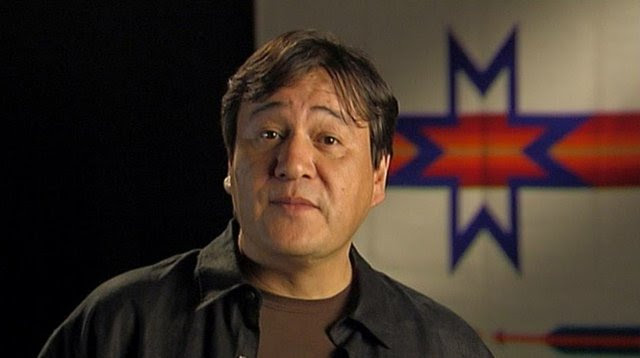 Mark Anthony Rolo, (pictured). who authored the column “Going Native” for The Progressive magazine, died May 30 at a hospice in Baraboo, Wis., after a long illness, Mrill Ingram reported Thursday for The Progressive. He was 57.
Mark Anthony Rolo, (pictured). who authored the column “Going Native” for The Progressive magazine, died May 30 at a hospice in Baraboo, Wis., after a long illness, Mrill Ingram reported Thursday for The Progressive. He was 57.
“A member of the Bad River Band of the Lake Superior Tribe of Chippewa Indians in Wisconsin, Rolo’s journalism career began with writing for The Circle newspaper at the Minneapolis American Indian Center in Minnesota and included being Washington bureau chief for Indian Country Today. He won several awards from the Native American Journalists Association for his writing, publishing articles in the Denver Post, Milwaukee Journal Sentinel, the Philadelphia Inquirer, as well as The Progressive.
“Rolo worked for the Native American Journalists Association from 1997 to 2003. He produced numerous educational films and documentaries, and taught classes at several Midwestern universities and tribal community colleges. . . .”
“Patricia Loew, professor at the Medill School of Journalism and co-director of the Center for Native American and Indigenous Research at Northwestern University, worked with Rolo as a colleague and a student.
“ ‘Mark was a fellow Bad River niijii, I knew in many contexts,’ she relates, using the Ojibwe word for ‘friend.’ ‘He was first and foremost a journalist with a strong sense of social justice and a pen that could be withering at times. He was fiercely loyal, as he was in sheltering and playing dad to his teenage nephew. I advised him as a graduate student, an experience that was both exhilarating and exasperating. He could be acerbic and suffered no fools, as his cohorts sometimes complained, and as his own students learned when he became a UW-Madison lecturer.’
“But what Loew says she’ll remember most is Rolo’s humor. . . .”
Support Journal-ismsFacebook users: “Like” “Richard Prince’s Journal-isms” on Facebook.
Follow Richard Prince on Twitter @princeeditor
Richard Prince’s Journal-isms originates from Washington. It began in print before most of us knew what the internet was, and it would like to be referred to as a “column.” Any views expressed in the column are those of the person or organization quoted and not those of any other entity. Send tips, comments and concerns to Richard Prince at journal-isms-owner@yahoogroups.com
View previous columns (after Feb. 13, 2016).
- Diversity’s Greatest Hits, 2018 (Jan. 4, 2019)
- Book Notes: Is Taking a Knee Really All That? (Dec. 20, 2018)
- Book Notes: Challenging ’45’ and Proudly Telling the Story (Dec. 18, 2018)
- Book Notes: Get Down With the Legends! (Dec. 11, 2018)
- Journalist Richard Prince w/Joe Madison (Sirius XM, April 18, 2018) (podcast)
- Richard Prince (journalist) (Wikipedia entry)
- February 2018 Podcast: Richard “Dick” Prince on the need for newsroom diversity (Gabriel Greschler, Student Press Law Center, Feb. 26, 2018)
- Diversity’s Greatest Hits, 2017 — Where Will They Take Us in the Year Ahead?
- Book Notes: Best Sellers, Uncovered Treasures, Overlooked History (Dec. 19, 2017)
- An advocate for diversity in the media is still pressing for representation, (Courtland Milloy, Washington Post, Nov. 28, 2017)
- Morgan Global Journalism Review: Journal-isms Journeys On (Aug. 31, 2017)
- Diversity’s Greatest Hits, 2016
- Book Notes: 16 Writers Dish About ‘Chelle,’ the First Lady
- Book Notes: From Coretta to Barack, and in Search of the Godfather
- Journal-isms’ Richard Prince Wants Your Ideas (FishbowlDC, Feb. 26, 2016)
- “JOURNAL-ISMS” IS LATEST TO BEAR BRUNT OF INDUSTRY’S ECONOMIC WOES (Feb. 19, 2016)
- Richard Prince with Charlayne Hunter-Gault,“PBS NewsHour,” “What stagnant diversity means for America’s newsrooms” (Dec. 15, 2015)
- Book Notes: Journalists Follow Their Passions
- Book Notes: Journalists Who Rocked Their World
- Book Notes: Hands Up! Read This!
- Book Notes: New Cosby Bio Looks Like a Best-Seller
- Journo-diversity advocate turns attention to Ezra Klein project (Erik Wemple, Washington Post, March 5, 2014)

